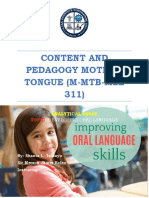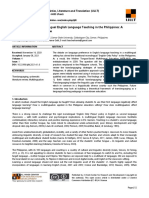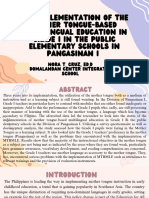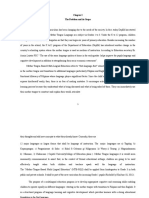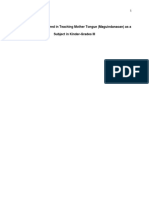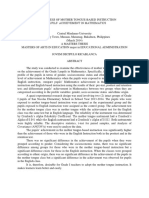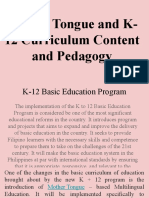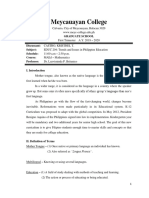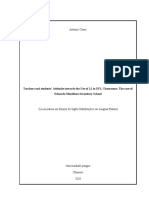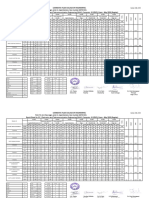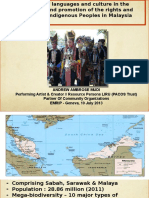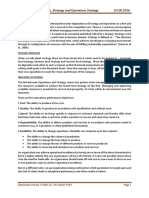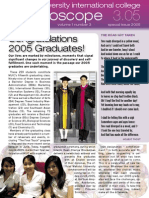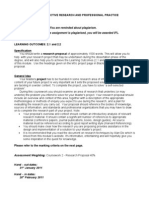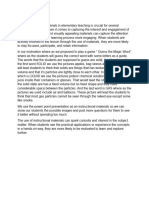0% found this document useful (0 votes)
52 views20 pagesResearch 1 3
This undergraduate thesis explores the implications of using mother tongue in foreign language teaching within multilingual classrooms, emphasizing its role in enhancing students' language acquisition, motivation, and participation. The study aims to identify effective teaching strategies and methodologies for integrating mother tongue in foreign language education, particularly in the context of the Philippines' educational framework. The findings are expected to benefit foreign language teachers, students, policymakers, and future researchers by providing insights into effective pedagogical practices that acknowledge students' linguistic backgrounds.
Uploaded by
Rosemarie BalbuenaCopyright
© © All Rights Reserved
We take content rights seriously. If you suspect this is your content, claim it here.
Available Formats
Download as DOCX, PDF, TXT or read online on Scribd
0% found this document useful (0 votes)
52 views20 pagesResearch 1 3
This undergraduate thesis explores the implications of using mother tongue in foreign language teaching within multilingual classrooms, emphasizing its role in enhancing students' language acquisition, motivation, and participation. The study aims to identify effective teaching strategies and methodologies for integrating mother tongue in foreign language education, particularly in the context of the Philippines' educational framework. The findings are expected to benefit foreign language teachers, students, policymakers, and future researchers by providing insights into effective pedagogical practices that acknowledge students' linguistic backgrounds.
Uploaded by
Rosemarie BalbuenaCopyright
© © All Rights Reserved
We take content rights seriously. If you suspect this is your content, claim it here.
Available Formats
Download as DOCX, PDF, TXT or read online on Scribd
/ 20
